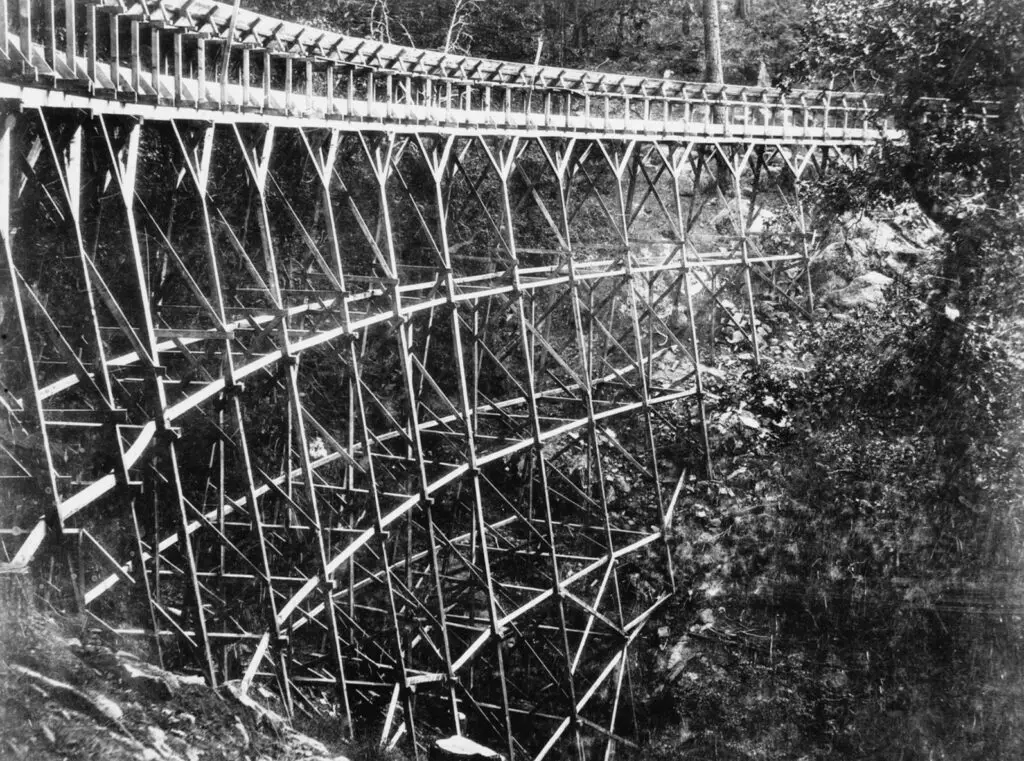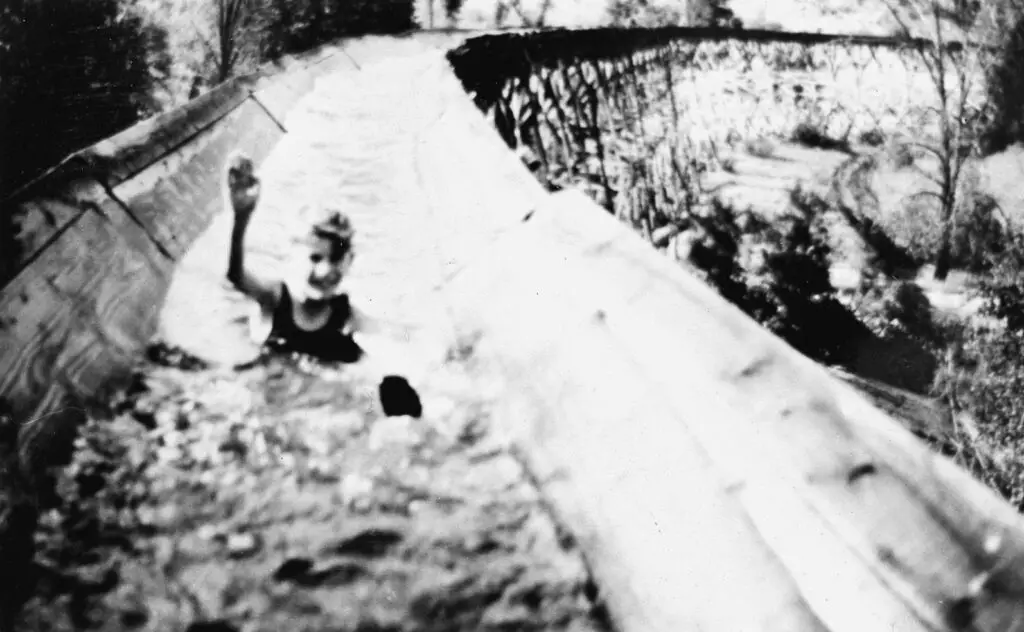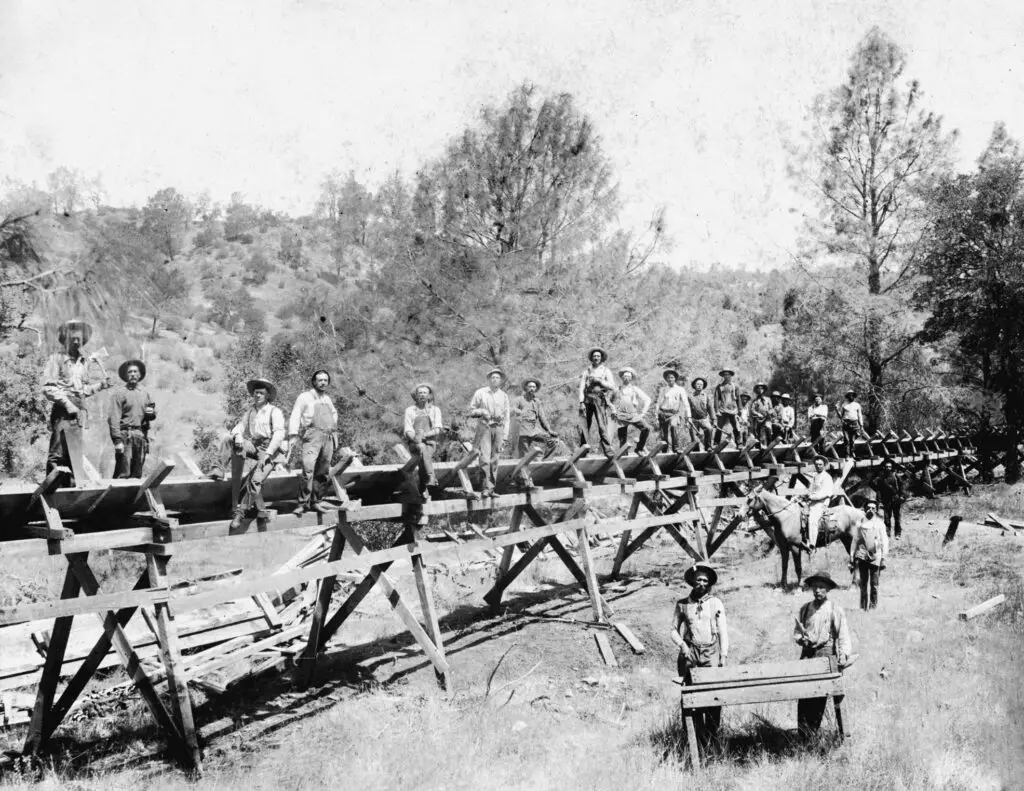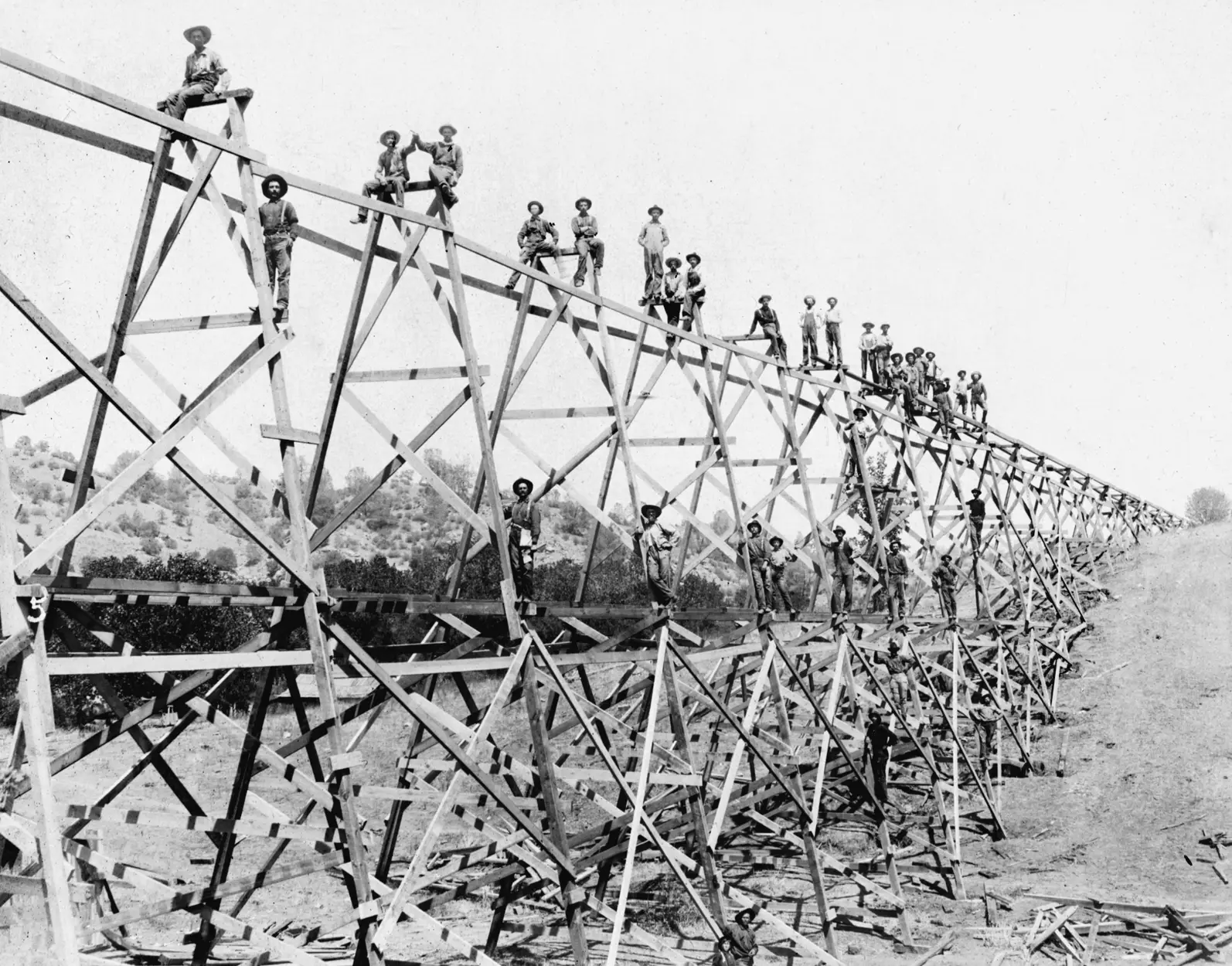This rare 1898 photograph of flume construction shows what a Herculean task it was to build the 56-mile water slide. The trough traversed a rugged country far from roads during its journey. In many places, it literally clung to the sides of steep bluffs; at other points tiptoed precariously across deep ravines on spindly trestles. In the foothills, it sometimes twisted and turned its way along like a giant snake. The sides of the flume were made up of 1 ½ inch by 16 inch boards and made into 16 foot, open-ended boxes, which were braced securely on an arrangement of cross sills and stringers.

The lumber flume is shown here in 1898 crossing “Chew Grade,” so called because the right-of-way passed over land leased by Ah Chew, a Chinese tenant farmer. The wooden V-trough spanned this deep ravine on a 65-foot-high trestle.

The flume obviously transported more than just lumber from the mountains to the Valley. In this photograph, one young lad enjoys a trip that would any modern amusement park log ride. At the end of a logging season, the flume tenders would load their gear on flume boats and ride the water down to Madera. There is one report that a cow somehow got into the flume and rode a portion of the way down.

Here the flume has reached the flat land around Madera. The box crew is busy repairing this part of the trough. The photograph was taken in 1900 by Porter Thede, a Madera Sugar Pine Lumber Company boss.




